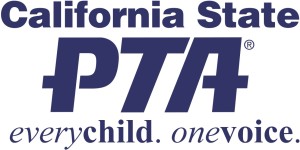(Date of Meeting)
(Meeting Location/Time)
I. Call to Order (on time, quorum met)
The president stands, raps the gavel once and calls the meeting to order.
“The meeting will please come to order.”
The president will review the meeting’s ground rules.
II. Opening Ceremonies
Pledge of Allegiance (if held in public facility).
“___________ will lead us in the Pledge of Allegiance. Will you please rise?”
“Thank you, ____________.”
Optional: Inspirational message, song, other.
“___________will present an inspirational song.”
III. Reading and Approval of Minutes – Action Items
The secretary addresses the chairman and reads the minutes.
(Or with the approval of the group, the minutes may be posted, distributed in advance or assigned to a committee of three or more for approval or correction, especially for the last association meeting.)
“The secretary will read the minutes of the __(date) meeting.”
OR “The minutes are posted at the entrance/were distributed at the door.”
“Are there any corrections?” (Note corrections.)
“The minutes stand approved as read/printed,”
OR “The minutes stand approved as corrected.”
IV. Financial Report. (Treasurer’s Report)
No motion is needed for adoption of the reports.
“___________ will present the Treasurer’s Report.”
“you have heard the report. Are there any questions?”
“The report will be filed for the audit.”
V. Audit Report (semi-annual) (Audit Report, Auditor’s Report) – Action Items
A motion is needed for adoption of this report.
“It has been moved and seconded that the audit report be adopted” Vote.
(Follow the steps of a motion, Parliamentary Procedure)
VI. Presentation of Bills
Since the approval of the budget does not authorize the expenditure of funds, bills must be presented, and their payment voted upon. Bills should be itemized as to amount, whom to pay, and what payment covers. Any association bills authorized and paid by the executive board must be ratified and recorded in the association minutes. Ratified bills should be itemized as to amount, who was paid, and what the payment covers (Payment Authorization/Request for Reimbursement).
“The treasurer (or the person assigned) will read the bills.”
“It has been moved and seconded that we pay the bills. Is there discussion?” Vote.
“It has been moved and seconded that we ratify payment of bills since last meeting” Vote. (Check Request System: Payment Authorization/Request for Reimbursement)
“It has been moved to authorize the Executive board to pay necessary Summer bills up to the budgeted amounts.” Vote.
(Check Request System: Payment Authorization/Request for Reimbursement)
(Follow the steps of a motion, Parliamentary Procedures)
VII. Reading of Communications
Communications are read by the (corresponding) secretary and may be acted upon as read, if action is required.
“The (corresponding) secretary will read the communications.”
VIII. Report of the Executive Board – Action Items
At association meetings a summary report (not the minutes) is read for the information of the members. Recommendations should be voted on one at a time, the secretary moving the adoption of each one.
“The secretary will present the report of the executive board.”
“You have heard the recommendations such as a motion to approve proposed programs (Preliminary Planning);”
to approve the budget (Approving the Budget; Budget Sample).”
to approve fundraising activities (Standards for PTA Fundraising).”
for the president and one additional elected officer to sign the following contract…” (Contracts).
(Follow the steps of a motion, Parliamentary Procedure)
A second is not required when a motion comes from a committee/board. Vote.
IX. Reports of Committees (Officers and chairmen, including the principal, faculty representatives, and student representatives on the secondary level) Bylaw Committee, Library Committee – Action Item, Convention Committee, Fundraising Committee – Action Item President calls for the report of the committee. The person making the report moves the adoption of any recommendations.
“__________ will present the report of the ___________committee.”
“Are there any questions regarding the report?”
“If not, the report will be filed,” or “You have heard the recommendation such as a motion to release funds up to the budgeted amount for programs through the next meeting (Preliminary Planning):”
(Follow the steps of a motion. Parliamentary Procedure.) Vote(s).
X. Unfinished Business
The president presents each item of unfinished business as indicated in the minutes. He/she should not ask “Is there any unfinished business?”
“The first item of unfinished business is _________.”
Report of school district acceptance of donated funds, goods, or materials.
XI. New Business
A motion is necessary before discussion and vote on any new business. All proposed business to be considered at the meeting must have been properly noticed to be acted upon. (See bylaws.)
“The first item of new business is ________.”
XII. Program (optional)
The president introduces the chairman to present the program.
“_________ will present the program.”
“Madame/Mister President, this concludes the program.”
XIII. Announcements
Date of the next meeting and important activities should be announced. If there is a social time following the meeting, this should be announced.
“The next meeting will be __________.”
“Please join us for refreshments.”
XIV. Adjournment
No motion is necessary to adjourn. President raps the gavel once.
“The meeting is adjourned.”
This agenda is a guide only, adaptable to meet unit’s needs. The agenda should be made in triplicate. Give copies to the (recording) secretary and to the parliamentarian. Distribute or post for the membership, the proposed budget and proposed annual programs with the agenda.
A newly-elected president may want to write everything out in detail. Check off each item as it is completed and nothing will be forgotten. The presiding officer stands while conducting business and sits (unless unable to be seen by the audience) while others are participating.
